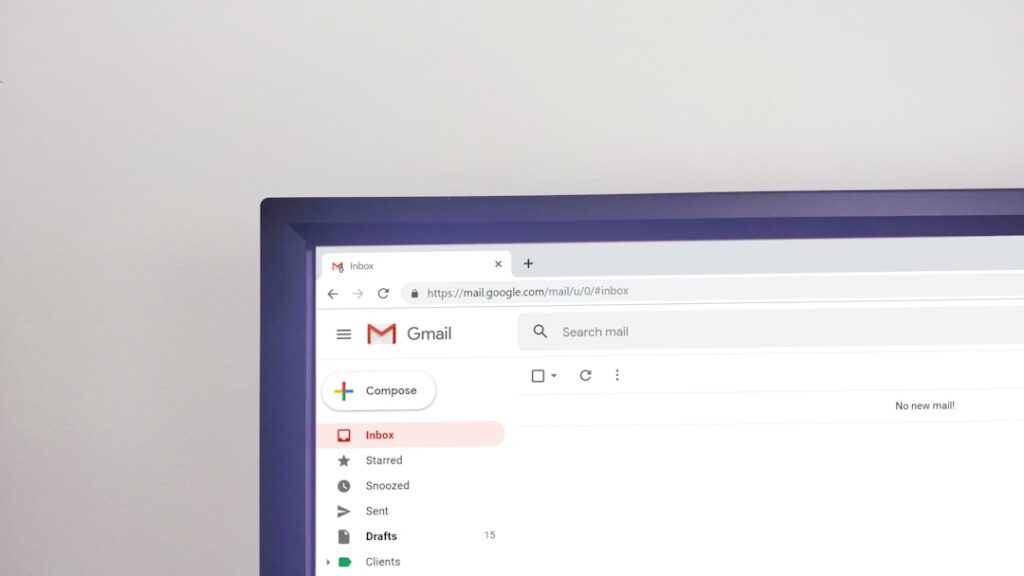A basic human right, access to education is essential to the growth of the individual & the community. It’s an effective instrument for reducing poverty and promoting social & economic advancement. Education provides people with the information, abilities, and critical thinking skills they need to advance personally and actively participate in the workforce.
Key Takeaways
- Access to education is crucial for individual development and societal progress
- Barriers to accessing education include poverty, discrimination, and lack of infrastructure
- Strategies for improving access to education include scholarships, mentorship programs, and flexible learning options
- Government initiatives to enhance access to education include funding for schools, policy reforms, and outreach programs
- Community efforts to increase access to education involve local partnerships, awareness campaigns, and volunteer programs
- Technology plays a key role in improving access to education through online learning platforms and digital resources
- The future of access to education will likely involve a combination of government, community, and technological efforts to ensure equal opportunities for all individuals
In order to solve difficult global challenges, it also promotes creativity and innovation. Education is especially vital for underprivileged & vulnerable groups, such as girls, kids with disabilities, residents of remote or conflict-affected areas, & others. It serves to empower people, advance gender equality, social inclusion, and dismantle barriers in society. By arming people with the knowledge necessary to make wise health decisions and efficiently access healthcare services, education also plays a critical role in improving health outcomes. In addition to being an issue of social justice, ensuring that everyone has fair access to high-quality education is also a calculated investment in human capital.
Communities and countries benefit from it in terms of general well-being, social stability, and economic development. Societies can reduce inequality, promote social cohesion, & create a more inclusive and sustainable future by advancing education. Economic Barriers to Education. One of the most frequent barriers to obtaining education is financial one.
Many low-income families are unable to pay for the expenses of education, including books, uniforms, transportation, and tuition. Children from low-income families are therefore frequently compelled to leave school early or never enroll at all. Cultural and Social Barriers. Moreover, social and cultural norms can provide obstacles to education, especially for girls & kids with disabilities. Discriminatory beliefs and actions can prevent them from attending school and maintain inequalities based on gender and disability.
| Metrics | Data |
|---|---|
| Number of students enrolled | 10,000 |
| Graduation rate | 85% |
| Number of teachers | 500 |
| Student-teacher ratio | 20:1 |
Barriers relating to geography and crises. Obtaining education is also severely hampered by geographic barriers, particularly in rural and isolated places. Children residing in these areas may find it challenging to regularly attend school due to limited transportation options, long commutes to school, and inadequate infrastructure. Also, education systems can be disrupted and children forced out of school by conflict and humanitarian crises. In such situations, it could be challenging for kids to get an education because of the possibility of school destruction or damage, teacher displacement, and family forced to flee.
These obstacles not only restrict people’s chances for personal growth but also impede society’s general advancement and prosperity. Reducing the obstacles to education necessitates a comprehensive strategy that tackles the underlying causes of marginalization and inequality. Making education more accessible and affordable for everyone is a crucial tactic. To help low-income families pay for education, targeted financial assistance can be provided in the form of cash transfers, subsidies, and scholarships.
Financial barriers to education can also be lessened by doing away with school fees and giving away free textbooks. Geographical obstacles to education access in remote areas can also be addressed by making investments in school infrastructure and transportation options. Encouraging inclusive & equitable educational systems that meet the various needs of every student is another crucial tactic. The participation of girls, children with disabilities, and other marginalized groups in education is restricted due to discriminatory practices and attitudes, which need to be addressed. To guarantee that every child has an equal chance to learn and succeed in school, inclusive learning environments, teaching strategies tailored to individual learning styles, and support services for students with special needs are imperative. In addition, partnerships & community involvement are essential for expanding educational opportunities.
In close collaboration with local communities, parents, civil society organizations, & other relevant parties, it is possible to pinpoint particular obstacles to education and create customized solutions that cater to the distinct requirements of every community. Better access to education for all can be achieved through more sustainable and successful interventions that encourage community ownership of education programs and involve local actors in decision-making processes. By putting policies and programs in place that address learning barriers, governments play a crucial role in ensuring that everyone has access to education. Prioritizing education in national development agendas & allotting enough funding to support the growth and development of educational systems are important first steps. To improve education and increase access to learning opportunities, this entails making investments in teacher preparation programs, school facilities, instructional materials, and technology.
Governments can also carry out focused interventions to assist vulnerable and marginalized groups who encounter particular obstacles in their pursuit of an education. Affirmative action policies to advance gender equality in education may be put into place, special education programs for kids with disabilities may be established, or families may be given conditional cash transfers to encourage sending their kids to school. Governments can also endeavor to enhance school safety and security, especially in areas affected by conflict, by putting policies in place to shield instructors and students from violence and making sure that schools are open during emergencies.
To track progress toward achieving equitable access to education and pinpoint areas for improvement, governments should also bolster their monitoring and evaluation systems. Governments can better understand the difficulties facing their educational systems & create evidence-based policies and programs that successfully address these difficulties by gathering data on school enrollment, attendance, learning outcomes, and other pertinent indicators. Communities are essential to the cause of universal access to education because they organize resources, push for reform, and lend support to neighborhood projects that increase educational opportunities for all.
Together, parent-teacher associations, community-based organizations, religious institutions, and other grassroots groups can advocate for laws that support equitable access to education and increase public awareness of the value of education. Also, informal learning spaces can be established in communities, like community centers or libraries, where kids can access educational resources & get help with their homework after school hours. These areas can also act as focal points for capacity-building & community engagement initiatives that support lifelong learning for people of all ages. Communities can also help with initiatives to build safer learning environments for kids & upgrade school facilities.
Communities may help create conducive learning environments that support access to education by taking part in school construction projects, planning volunteer maintenance events, or lobbying for increased safety measures in schools. Communities can also act as support systems for students who are particularly vulnerable and encounter obstacles in their pursuit of an education. This can entail setting up support groups for kids with disabilities, offering mentorship programs for girls, or helping students who live in rural areas get around.
Communities can play a critical role in promoting inclusive and equitable access to education by banding together to address the specific needs of their members. Education of High Quality Available Anywhere. Regardless of where they are in the world, students can access top-notch course materials through digital learning resources & online learning platforms.
For students who might not have access to traditional educational institutions and live in rural or underdeveloped areas, this is especially helpful. Personalized Learning Experiences. Technology can also facilitate customized learning experiences that meet the needs and learning preferences of each individual student.
Personalized instruction that matches each student’s unique learning needs can be delivered by using adaptive learning technologies to evaluate students’ strengths and weaknesses. This can ensure that all students have access to individualized support that helps them reach their full potential, which can help address disparities in educational outcomes. Accessibility, Inclusion, and Cooperation. Also, teachers and students from various locations and backgrounds can collaborate and share knowledge more easily thanks to technology. With the help of online communities, virtual classrooms, and collaborative tools, educators and learners can interact with colleagues globally, share ideas, and take part in cross-cultural learning opportunities that extend their horizons.
By offering tools and assistive devices that meet the various needs of students with disabilities, technology can also promote inclusive education. As an illustration, students with visual or hearing impairments can access educational materials and participate in learning activities on an equal basis with their peers with the use of screen readers, speech recognition software, and other assistive technologies. The ongoing efforts to remove the obstacles preventing millions of people worldwide from accessing higher education will determine the future of educational opportunities. Access to high-quality education must continue to be a top priority for nations, local communities, and international organizations as global issues like climate change, technology breakthroughs, and demographic changes continue to transform societies.
Future efforts to increase access to education will depend heavily on creative strategies that make use of technology, encourage inclusive behaviors, and involve local communities. It is possible to develop new learning pathways that go beyond conventional limitations by utilizing the potential of digital technologies like artificial intelligence, virtual reality, and big data analytics. To further guarantee that no learner is left behind, inclusive education systems that meet the various needs of every student must be promoted. This involves supporting students from marginalized communities who face particular obstacles to accessing high-quality learning opportunities, addressing gender gaps in education, and advocating inclusive practices for kids with disabilities. Establishing collaborations among governments, private sector entities, civil society organizations, & international agencies will be crucial in propelling joint efforts towards realizing fair and impartial access to education. Cooperating across industries & national boundaries makes it feasible to exchange best practices, scale up successful interventions, & more efficiently mobilize resources to increase everyone’s access to high-quality learning opportunities.
In summary, having access to education is a basic human right that is necessary for social cohesion, economic success, personal growth, and sustainable development. Governments, communities, civil society organizations, international agencies, and other stakeholders must collaborate to achieve a common objective in order to effectively address the barriers that impede access to education. It is possible to create a more prosperous and inclusive future for future generations by giving equal access to high-quality education for all people, regardless of their circumstances or background.
If you’re having trouble reaching the EDD through email, you may find this article on tips for successfully getting through to the EDD helpful. It provides valuable advice on how to navigate the EDD’s communication channels and get the assistance you need.
FAQs
What is askedd.edd.ca.gov email?
askedd.edd.ca.gov email is an official email address used by the California Employment Development Department (EDD) for communication with individuals and businesses regarding unemployment insurance, disability insurance, and other related services.
How can I contact askedd.edd.ca.gov email?
You can contact askedd.edd.ca.gov email by sending an email to the address provided or by using the contact information available on the EDD website.
What type of information can I expect to receive from askedd.edd.ca.gov email?
Information from askedd.edd.ca.gov email may include updates on unemployment insurance claims, disability insurance benefits, tax forms, and other relevant EDD services.
Is askedd.edd.ca.gov email a secure way to communicate with EDD?
Yes, askedd.edd.ca.gov email is a secure and official communication channel used by the California Employment Development Department to correspond with individuals and businesses regarding EDD services.
Can I trust emails from askedd.edd.ca.gov?
Yes, emails from askedd.edd.ca.gov are legitimate and can be trusted as they are sent by the official EDD email address for communication with individuals and businesses.



